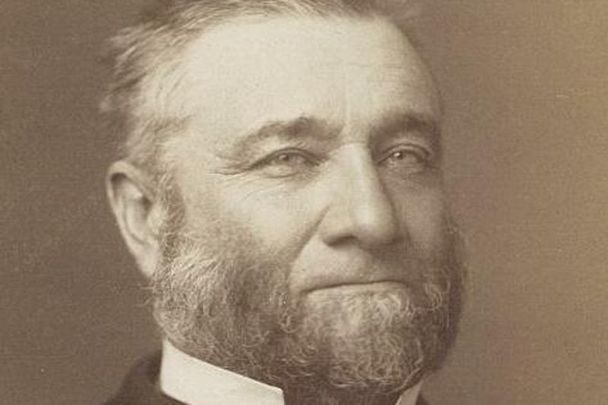One of the defining moments in the birth of democracy in Australia was the Eureka rebellion, which was led by Irish man Peter Fintan Lalor, who went on to become a leading politician.
Lalor was born on February 5, 1827 in the parish of Raheen, Queen's County (later Laois) one of 11 children to Patrick Lalor (pronounced Lawler) and his wife Ann, née Dillon. The family was descended from the O'Lalours, one of the Seven Septs of Leix who had fought against the English invasion of Ireland in the sixteenth century.
Lalor, who was educated at Carlow College and then trained as a civil engineer at Trinity College, was the first Catholic MP from Queen's County since the anti-Catholic Test Acts of the 17th century and an ardent advocate of home rule for Ireland.
As the ravages of the famine laid waste to Ireland, three of the Lalor brothers left for America where they would fight on opposite sides in the American Civil War.
Peter and his brother Richard, enticed by stories of gold discoveries in Victoria, decided to try their luck in Australia. They arrived at Melbourne in October 1852 and Peter found work on the construction of the Melbourne-Geelong railway. He later became a partner in a wine, spirits and provision merchants in Melbourne.
Early in 1854, Peter moved to the newly discovered gold fields in Ballarat, Victoria. His brother Richard did not accompany him to the diggings and soon returned to Ireland where he became a member of parliament for Leix and a resolute supporter of Parnell.
At Ballarat, Lalor staked a claim on the Eureka lead, where many Irish diggers were concentrated, forging a close friendship with a Scotsman Duncan Gilles, who would later become the Premier of Victoria.
On November 29, 1854, a meeting of about 12,000 men was held at Ballarat where opposition against the incompetent and often brutal administration of the goldfields was discussed. It was decided that the only course of action available to the diggers was rebellion and Lalor was elected to lead it.
He told the meeting “I expected someone who is really well known to come forward and direct our movement. However, if you appoint me your commander-in-chief, I shall not shrink.”
The diggers threw up a barricade which was called the Eureka stockade which eventually housed 130 men the majority of whom were Irish. This was attacked by troops and police at about 3 am, Sunday, December 3. Around 30 diggers were killed and over 100 were taken prisoner.
In the attack, Lalor was seriously wounded in the left arm, resulting in its amputation. A warrant for Lalor's arrest on charges of sedition was initially sought, but he was taken from Ballarat and hidden by his supporters in the Young Queen Hotel at South Geelong. The warrant was withdrawn in June 1855 after juries had found 13 other ringleaders not guilty of sedition.
Lalor married Alicia Dunne on July 10, 1855 in Geelong.

Love Irish history? Share your favorite stories with other history buffs in the IrishCentral History Facebook group.
As a result of the uprising, a number of the miners' complaints were resolved. Legislation was passed to give miners the right to vote. A new form of licensing of Miners Rights costing £1 per year was introduced. The monthly gold tax was abolished. A general amnesty of the 114 arrested at the Eureka Stockade was also proclaimed.
It was a victory for the miners and one of the key steps to Victoria state instituting male suffrage in 1857 and female suffrage in 1908.
Due to his leadership at the Eureka stockade, Lalor was elected to the Victorian Legislative Council in November 1855, as Member for the new district of Ballarat and remained in this role until March 1856.
In November 1856, under the revised democratic constitution (featuring near-universal white male suffrage,) Lalor was elected unopposed to the Legislative Assembly seat of North Grenville (Ballarat West).
As with many young radicals, he became more conservative as he grew older. In 1857, he supported a repressive land Bill which favoured the rich. There were 17,745 Ballarat signatures to a petition against Lalor's land Bill as a result he would go on to change seats in parliament never representing Ballarat again.
In a long and varied political career, Lalor was at various times Commissioner of Trade & Customs and Postmaster-General of Victoria.
The pinnacle of his career was when he was made the speaker of the Parliament in Victoria in 1880. He held the position until 1887 when he retired due to ill health. On his retirement, he was awarded a pension of £4,000 by parliament. Peter lived for another two years, sadly in failing health, passing away on Saturday, February 9, 1889, aged 62.
A statue of Peter Lalor was erected at Sturt Street in Ballarat in 1893.
This article was submitted to the IrishCentral contributors network by a member of the global Irish community. To become an IrishCentral contributor click here.




Comments